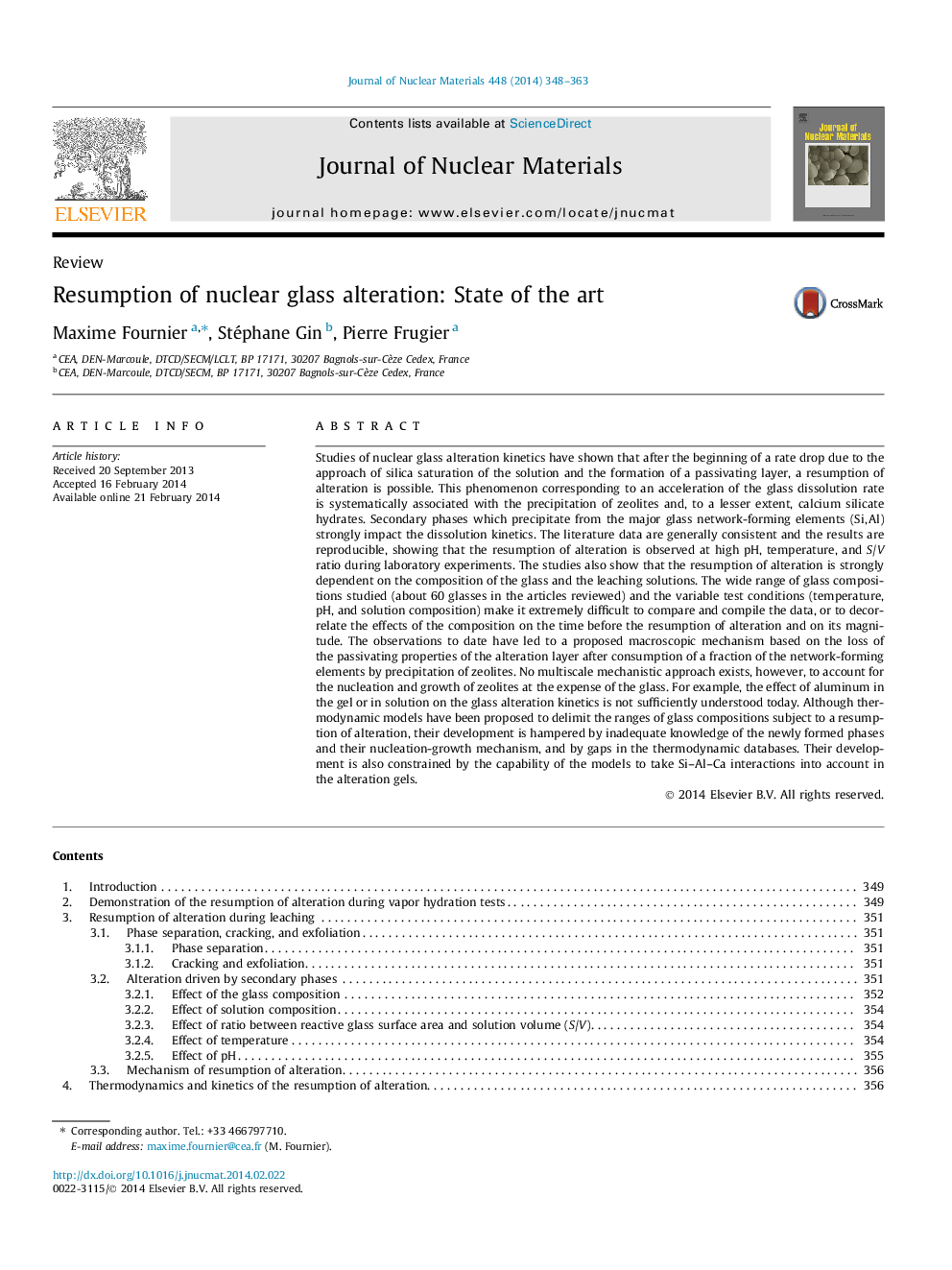| کد مقاله | کد نشریه | سال انتشار | مقاله انگلیسی | نسخه تمام متن |
|---|---|---|---|---|
| 7968179 | 1514197 | 2014 | 16 صفحه PDF | دانلود رایگان |
عنوان انگلیسی مقاله ISI
Resumption of nuclear glass alteration: State of the art
ترجمه فارسی عنوان
تداوم تغییر شیشه ای: وضعیت هنر
دانلود مقاله + سفارش ترجمه
دانلود مقاله ISI انگلیسی
رایگان برای ایرانیان
موضوعات مرتبط
مهندسی و علوم پایه
مهندسی انرژی
انرژی هسته ای و مهندسی
چکیده انگلیسی
Studies of nuclear glass alteration kinetics have shown that after the beginning of a rate drop due to the approach of silica saturation of the solution and the formation of a passivating layer, a resumption of alteration is possible. This phenomenon corresponding to an acceleration of the glass dissolution rate is systematically associated with the precipitation of zeolites and, to a lesser extent, calcium silicate hydrates. Secondary phases which precipitate from the major glass network-forming elements (Si, Al) strongly impact the dissolution kinetics. The literature data are generally consistent and the results are reproducible, showing that the resumption of alteration is observed at high pH, temperature, and S/V ratio during laboratory experiments. The studies also show that the resumption of alteration is strongly dependent on the composition of the glass and the leaching solutions. The wide range of glass compositions studied (about 60 glasses in the articles reviewed) and the variable test conditions (temperature, pH, and solution composition) make it extremely difficult to compare and compile the data, or to decorrelate the effects of the composition on the time before the resumption of alteration and on its magnitude. The observations to date have led to a proposed macroscopic mechanism based on the loss of the passivating properties of the alteration layer after consumption of a fraction of the network-forming elements by precipitation of zeolites. No multiscale mechanistic approach exists, however, to account for the nucleation and growth of zeolites at the expense of the glass. For example, the effect of aluminum in the gel or in solution on the glass alteration kinetics is not sufficiently understood today. Although thermodynamic models have been proposed to delimit the ranges of glass compositions subject to a resumption of alteration, their development is hampered by inadequate knowledge of the newly formed phases and their nucleation-growth mechanism, and by gaps in the thermodynamic databases. Their development is also constrained by the capability of the models to take Si-Al-Ca interactions into account in the alteration gels.
ناشر
Database: Elsevier - ScienceDirect (ساینس دایرکت)
Journal: Journal of Nuclear Materials - Volume 448, Issues 1â3, May 2014, Pages 348-363
Journal: Journal of Nuclear Materials - Volume 448, Issues 1â3, May 2014, Pages 348-363
نویسندگان
Maxime Fournier, Stéphane Gin, Pierre Frugier,
